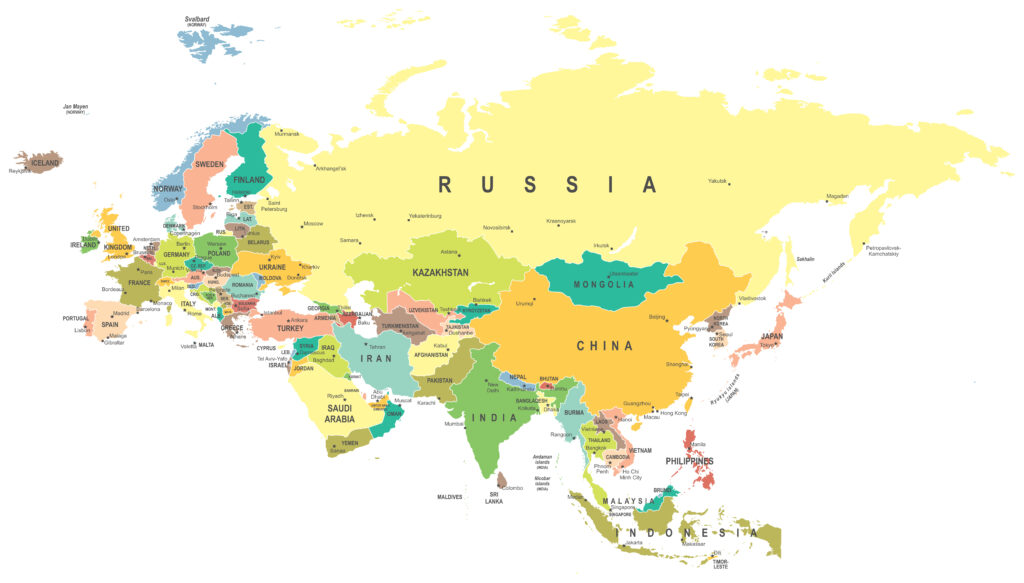
By Jeff Hahn, Foreign Policy, 1/24/22
In early November 2021, several media outlets and the U.S. government began to warn of an imminent full-scale invasion of Ukraine by Russia on a scale not seen since the Iraq War of 2003. The attack was predicted to come around Christmas or in mid-January. Both dates have come and gone, and no invasion has materialized, yet some policymakers and most pundits continue to warn that it will happen, and soon. Moscow announced a series of demands on European security—unrealistic ones, but ones that seem set as a starting point for a dialogue among peers. This is a shift in the dynamic that Russia has been pushing for years: increasing its indirect confrontations with the United States to get America to treat it as a peer, not a spent force that can be ignored or dictated to.
The evidence so far points to Russia looking toward talks, not invasion. The initial reaction was set off by Russia’s movement of military assets within the Southern and Western military districts. The movements did not even represent a serious addition of forces to these command areas but a repositioning of different assets.
But there is a plausible argument that these are not a serious threat to Ukraine. In an article published in the Dutch-language magazine Knack and also on social media, Sim Tack, an independent military analyst (and previous co-author of mine) has noted that there has been more of a concentration of equipment than of personnel. He suggested last month that “Russia appears to experiment with forward positioning of equipment over longer durations of time than we usually see. They have done this first at Opuk between April and October, and now at Yelnya, Novoozerne, and Bakhchysarai. An emulation of NATO procedures in Eastern Europe.”
As Tack notes, the Russian air force has been largely absent from these movements. Air superiority would be a critical component of any ground offensive, so the lack of movement other than some helicopter formations is a major point against an imminent offensive.
Though on maps like the one published by the New York Times earlier this month Russian formations seem to be almost inside Ukraine, some are hundreds of miles away, lined up in depots at long-standing bases. There has been no effort to conceal the troops in forward positions or prepare them for an imminent offensive. Exercises in the Southern and then Western military districts have been interpreted as directed at Ukraine, yet these exercises were well within the scale of what is typical for Russia’s training schedule—and if units were being relocated to new areas as part of a reconfiguration, training and logistical exercises make perfect sense.
The Russian military is in many ways still reforming and evolving into a post-Soviet formation. Massed combined arms formations manned by conscripts are being replaced by contract professional formations. A major part of this involves a tempo of regular training and exercises.
There has also been an over-concentration on the motives of Russian President Vladimir Putin himself. Understanding Putin has its place in legitimate scholarship, but it is made more useful if scholars look at Putin within the context of the Russian political system. Putin is the president of Russia and the main arbiter of its various elite circles. He governs through the Russian political consensus that emerged after the disastrous 1990s. He is not a supreme master of strategy or a maniacal Bond villain set on revenge for the fall of the Soviet Union. Rather than attempting to read Putin’s mind, observers should ask not just what he wants, but how he could achieve it and what the cost-benefit is for the regime and for Russia.
Read full article here.
I am certain that the Russian Federation DOES NOT want the huge responsibility of taking on the reconstruction of the Ukrainian economy and denazification of Ukrainian society. As S.A. Karaganov, chairman of the Council on Foreign and Defense Policy, one of Russia’s premier security think tanks, has stated: “And the seizure of Ukraine, I am sure, is not included in our military plans. If only for the reason that capturing a country that is castrated economically, morally and intellectually, a country with a destroyed infrastructure and an embittered population is the worst-case scenario. The worst thing America can do for us is to give us Ukraine in the form to which they brought it.” http://karaganov.ru/publications/589 (in Russian). I’ll take this assessment over the Blinken-Nudelman scaremongering about a “Russian invasion” and a “reincarnation of the Soviet Union.”
It is often forgotten that one of the principal factors in the collapse of the USSR was the enormous financial burden borne by the Soviet metropolis in the subsidizing not only of the Union republics, but of the Warsaw Pact countries of the “socialist bloc,” and various fellow travelers among the non-aligned countries. The collapse of the USSR, paradoxically, liberated the Russian Federation from most of these obligations. I’m positive that Russia is not anxious to resume its support for freeloaders.
As to the “build-up” of Russian troops on the border of the Russian Federation and the Ukraine (if it really exists; the article casts doubt on these assertions), it may simply serve as a warning to the Ukrainian army – said to be 125,000 men and their heavy equipment on the contact line with the Donbass republics – not to do anything stupid. It is not even certain that Russian ground forces would be necessary in the first instance if the Ukrainians tried to implement the “Croatian” or “Karabakh” scenario.
I see that United Russia is going to recommend to the Russian President that the defensive capacities of the Donbass republics be substantially upgraded, which may be a sort of legalization of an on-going process.
Hi Natylie,
I didn’t expect to be sent to a paywall…….
Deena
I was able to exit out of that screen and view the whole article.